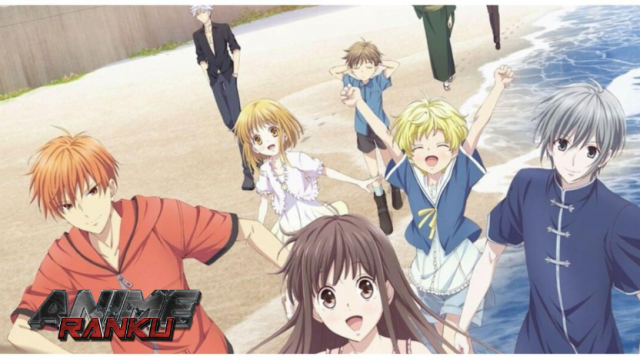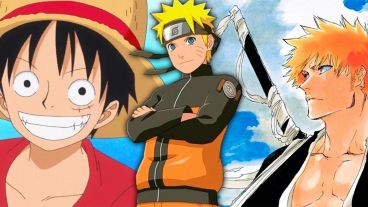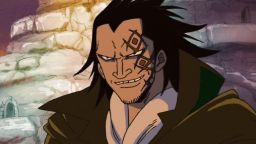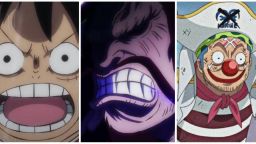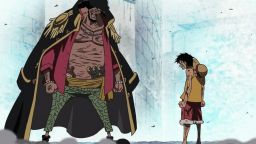Fruits Basket is a classic shojo series known for its intriguing plot, superb animation, and lovely music. Among all the incredible theme songs, the second ending of Season 2 is a fan favorite: "Eden" by Monkey Majik. The visuals are more than just pretty pictures. The image and theme of each character tell their story and contain various symbolism and hidden meanings. The term "celebration" refers to the act of celebrating a birthday.
All of the flowers seen in the images match the months on the Hanafuda cards. Also, each of the former Japanese Lunar-Solar Calendar months that Natsuki Takaya named the majority of the cursed Sohma members after corresponds to a different Zodiac animal. Kureno and Momiji are exceptions to that rule; their names should be rearranged in accordance with their respective Zodiac signs. Notable outliers include Yuki, whose name doesn't go with his month of December, and Kyo, whose Zodiac sign doesn't have a month.
The Bamboo Cage by Kyo Sohm

The music starts with Kyo wearing a yukata and reaching toward the sunlight in a bamboo forest. The yukata he's wearing is the same as Kazuma's grandfather wears when living in the cat's room, and the bamboo forms a metaphorical cage. The picture depicts how Kyo is destined to be trapped in the cat's room for the rest of his life. However, bamboo also represents strength, flexibility and growth. These attributes sit well with a character who is immature at first but later becomes more understanding and come to terms with his feelings instead of running away from them.
Pine Cones by Hatsuharu Sohma

The scene of the pine cones surrounding Hatsuharu makes perfect sense considering that the pine tree is an iconic symbol of the Japanese New Year. It represents renewal and a bright future. The red moon behind him represents a bad omen, which depicts the "dark" version of himself. The flower petals in his hand resemble roses or peonies, which he is trying to grasp but slip away from his fingers, depicting Haru's efforts to grab hold of Isuzu, who is constantly pushing him away.
A Plum Flower Tree is Kisa Sohma

Kisa is sitting on a branch of a plum blossom tree, which represents a change of seasons. This is a symbol of resilience and perseverance in the face of adversity because plum blossoms often bloom most vibrantly even amid the harsh winter snow. Being abused by Akito and getting bullied by her classmates causes such severe trauma that Kisa stops speaking altogether. However, with the help of others, she begins to heal and eventually becomes ready to face the challenges ahead.
Cherry Blossoms by Kureno Sohma

As mentioned previously, Kureno's and Momiji's names are interchanged since March is the month of the rabbit. Kureno is standing beside a cherry blossom tree, which symbolizes the start of spring and new beginnings. Cherry blossoms start to fall after just two weeks of blooming, depicting the fleeting nature of life. This is a metaphor for how he's the first Sohma to break free from his curse. Kureno is also holding a red cloth that Akito always wears, depicting how he can't break away from her.
Wisteria by Hatori Sohma

Here, Hatori is surrounded by wisteria, which can mean a lot of things, but those that truly correspond to his personality are love, patience, honor and endurance. Furthermore, behind him is a depiction of a solar eclipse, which is said to bring destined new beginnings and opportunities. After failing terribly in his first love, Hatori loses his reason to smile and only finds happiness once he meets Mayuki again.
Irises by Ayame Sohna

Ayame is surrounded by irises and is even lovingly holding one. The iris signifies the ability to purify evil energy and protect oneself, which depicts how he tries to redeem himself after ignoring Yuki for much of his life. Japanese irises also symbolize admiration. Ayame admires Hatori for all the latter's good qualities. He then begins to admire Tohru, whose kindness reminds him of Hatori.
Peonies by Isuzu Sohma

In the show, Isuzu is a reclusive character who never expresses her worries. She is depicted in this image gazing back at pink peonies, which stand for honor and fortitude. She displays bravery in seeking to break the curse on her own despite having a sad childhood. If they are peonies, the image of Haru attempting to grasp flower petals would also make sense.
Bush Clovers by Hiro Sohma

A variety of flora and grasses surround Hiro while he sits on the ground. Bush clovers, which are symbolic of melancholy and unrequited love in Japan, may be seen in the corner on the right. Bush clovers are another well-known image of autumn. Since he mistakenly wounds the one he loves and then attempts to remove himself from her, Hiro suffers from melancholy. The unrequited love also symbolizes his sentiments for Kisa, who was long oblivious of them.
Spider Lilies by Kyoko Honda

Kyoko is standing amid a field of red spider lilies and is following crimson butterflies. The butterflies here represent two key metaphors. First, the crimson butterflies represent her nickname, "The Crimson Butterfly," from when Kyoko was an active gang member. Secondly, some mythology claims that butterflies carry the soul of the departed. Furthermore, red spider lilies are associated with death. According to Buddhist mythology, the red spider lily is said to guide the dead through samsara, the cycle of rebirth.
Japanese Pampas Grass by Ritsu Sohma

Ritsu is named after August, the month known for the rice harvest. He is standing on the field of pampas grass -- a symbol of a good harvest because of its resemblance to an ear of rice. Ritsu lives a difficult life while trying to keep up with his academics and getting in trouble because of his clumsiness. His hardships parallel that of the farmers working tirelessly in fields of rice. The giant full moon is a metaphor for his transformation as he begins to develop self-confidence.
Chrysanthemums by Momiji Sohma

The chrysanthemum flowers here are both red and yellow, depicting a lot of things. In some cultures, a yellow chrysanthemum represents neglected love or sorrow. Because his parents abandon Momiji, he never experiences the feeling of being genuinely loved. Red, however, is a symbol of love. Additionally, chrysanthemums symbolize friendship and happiness.
Maple Leaves by Shigure Sohma

The most complex character in the series is surrounded by red maple leaves, which represent balance and practicality, perfectly fitting his personality. Maple leaves are green in the beginning but change colors as soon as autumn starts. Shigure constantly switches his personality from kind to manipulative. He plays mind games with others but also cares about those close to him in his own way.
The Willow Plant by Kagura Sohma

The ironic symbolism of Kagura being surrounded by willow plants is that in British culture, green willow represents false love. Kagura always claims to love Kyo, but deep down, she knows it's just an act to make herself look less pitiful. The frog in the right-hand corner represents a return, signifying Kagura's return to her origins once she confesses her true feelings to Kyo. The cherry blossoms on her kimono and the frog represent the fleeting nature of her love and that it's now gone without a trace.
White Rose and Chinese Bell Flowers by Yuki Sohma

Yuki means "snow," but the kanji for his name means a "reason to hope." The white rose he is holding represents innocence and purity. He looks like he is yearning for that white rose or what it symbolizes. Yuki believes himself to be selfish, so he tries to fake his personality as someone kind and innocent. The Chinese bell flowers symbolize unwavering love and determination.
Camellias by Akito Sohma

Akito's visual is rather dark and gloomy compared to the others. She is holding a camellia, somewhat like Yuki holding the white rose. Considering that the camellia is known to express longing, the metaphor behind it is fairly clear. Akito longs for affection from others, and at some point, her desire turned into obsession, which is depicted by the almost crushed flower. Furthermore, in some cultures, this flower is considered a bad omen become of how the head falls off once it wilts.
Tohru Honda: The Field of Sunflowers

Lastly, the series' main protagonist is smiling cheerfully in a sunflower field, reaching out her hand toward the viewer. Sunflowers are of course associated with the sun, depicting how Tohru brings happiness to the lives of Sohmas. Moreover, in his frame, Kyo is likewise reaching out to the sunlight, meaning that the "hope" he yeans for is Tohru herself. Sunflowers hold various meanings across different cultures, but in Japan, they symbolize hope and faith.
